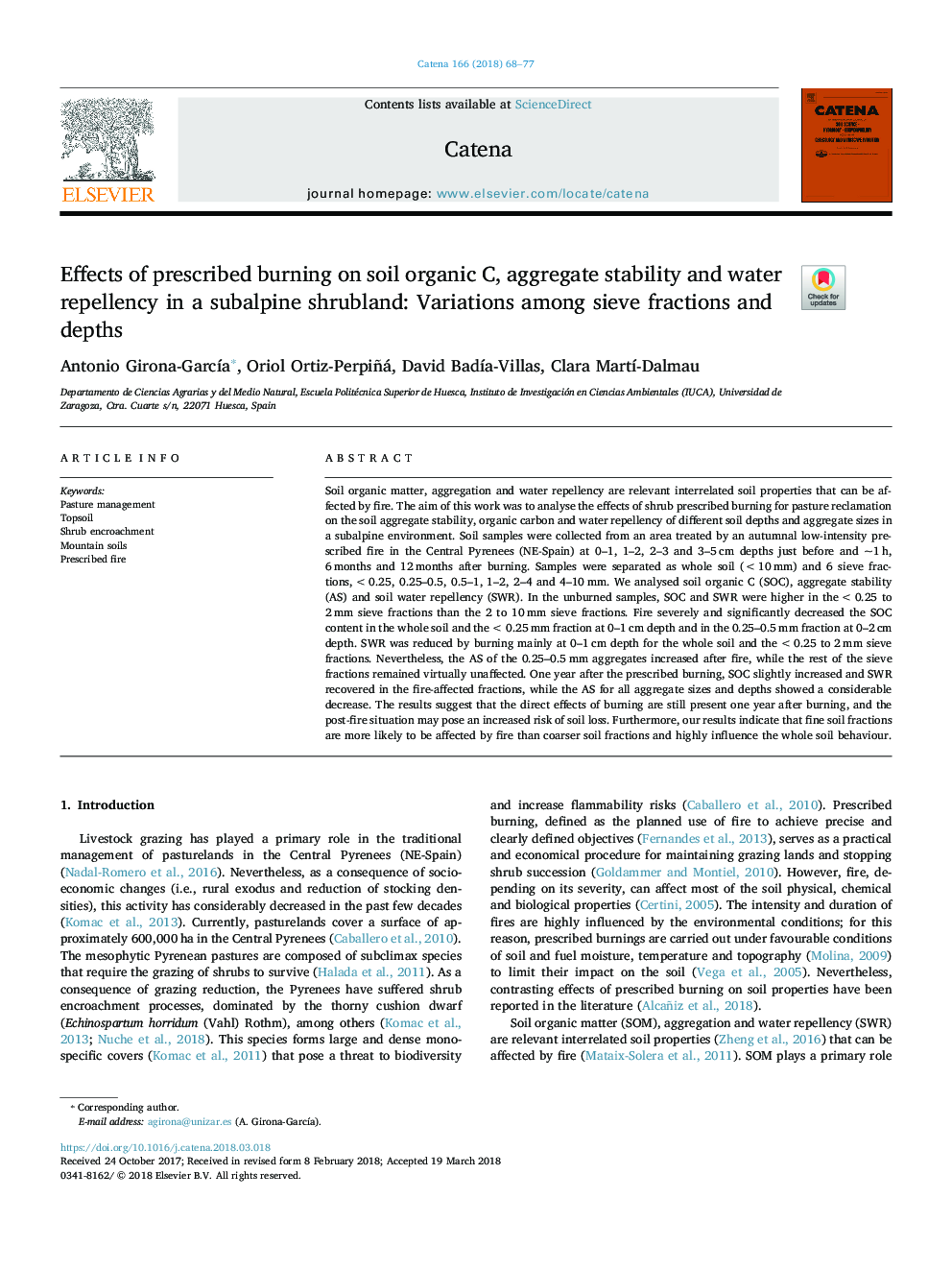| Article ID | Journal | Published Year | Pages | File Type |
|---|---|---|---|---|
| 8893523 | CATENA | 2018 | 10 Pages |
Abstract
Soil organic matter, aggregation and water repellency are relevant interrelated soil properties that can be affected by fire. The aim of this work was to analyse the effects of shrub prescribed burning for pasture reclamation on the soil aggregate stability, organic carbon and water repellency of different soil depths and aggregate sizes in a subalpine environment. Soil samples were collected from an area treated by an autumnal low-intensity prescribed fire in the Central Pyrenees (NE-Spain) at 0-1, 1-2, 2-3 and 3-5â¯cm depths just before and ~1â¯h, 6â¯months and 12â¯months after burning. Samples were separated as whole soil (<10â¯mm) and 6 sieve fractions, <0.25, 0.25-0.5, 0.5-1, 1-2, 2-4 and 4-10â¯mm. We analysed soil organic C (SOC), aggregate stability (AS) and soil water repellency (SWR). In the unburned samples, SOC and SWR were higher in the <0.25 to 2â¯mm sieve fractions than the 2 to 10â¯mm sieve fractions. Fire severely and significantly decreased the SOC content in the whole soil and the <0.25â¯mm fraction at 0-1â¯cm depth and in the 0.25-0.5â¯mm fraction at 0-2â¯cm depth. SWR was reduced by burning mainly at 0-1â¯cm depth for the whole soil and the <0.25 to 2â¯mm sieve fractions. Nevertheless, the AS of the 0.25-0.5â¯mm aggregates increased after fire, while the rest of the sieve fractions remained virtually unaffected. One year after the prescribed burning, SOC slightly increased and SWR recovered in the fire-affected fractions, while the AS for all aggregate sizes and depths showed a considerable decrease. The results suggest that the direct effects of burning are still present one year after burning, and the post-fire situation may pose an increased risk of soil loss. Furthermore, our results indicate that fine soil fractions are more likely to be affected by fire than coarser soil fractions and highly influence the whole soil behaviour.
Related Topics
Physical Sciences and Engineering
Earth and Planetary Sciences
Earth-Surface Processes
Authors
Antonio Girona-GarcÃa, Oriol Ortiz-Perpiñá, David BadÃa-Villas, Clara MartÃ-Dalmau,
